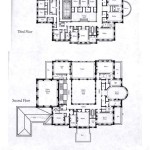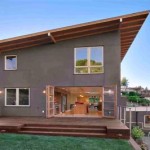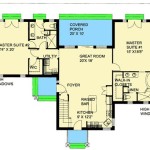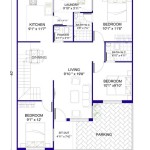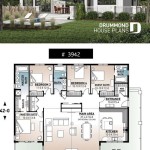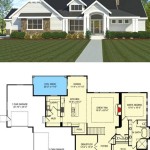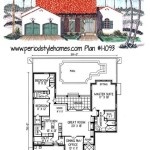How to Design Floor Plans
Designing floor plans is a fundamental step in any construction or renovation project. A well-designed floor plan serves as a blueprint for the spatial organization of a building or space, influencing the functionality, flow, and aesthetics. Whether you are a professional architect or a homeowner embarking on a DIY project, understanding the principles of floor plan design is crucial for achieving a successful outcome.
1. Understand the Needs and Requirements
The first step in designing a floor plan is to gain a comprehensive understanding of the needs and requirements of the project. This involves considering the intended use of the space, the number of occupants, and their specific needs and preferences. For instance, a family home will have different requirements than a commercial office space. A thorough analysis of these factors will guide the design process and ensure that the floor plan meets the intended purpose.
For a residential floor plan, you might consider:
- The number of bedrooms and bathrooms needed
- Whether a formal dining room or family room is desired
- The need for a home office or guest room
- The preferences for open or closed floor plan concepts
- Accessibility requirements for individuals with disabilities
For a commercial space, you might consider:
- The specific business functions and activities to be conducted
- The required office space, meeting rooms, and common areas
- The flow of customers and employees
- The need for storage space, break rooms, and other amenities
2. Plan the Layout and Circulation
Once the needs are established, the next step is to plan the layout of the space and consider the flow of movement. This involves determining the size and arrangement of rooms, hallways, and other areas, as well as the placement of doors and windows. The goal is to create a functional and efficient space that meets the requirements of the project while maximizing usable area.
Here are some key considerations for planning a floor plan:
- Traffic flow: Design pathways that are clear and intuitive, facilitating movement between rooms and minimizing congestion.
- Room adjacency: Consider the proximity of rooms based on their intended use and connections. For example, a kitchen should be near the dining area, and a bathroom should be convenient to bedrooms.
- Privacy: Ensure that private spaces such as bedrooms are separated from public areas for appropriate privacy.
- Natural light: Position windows strategically to maximize natural light and ventilation, creating a brighter and more inviting space.
3. Use Floor Plan Software and Tools
Designing floor plans can be a complex process, and using specialized software can significantly simplify the task. There are numerous floor plan software options available, ranging from free online tools to professional-grade applications. These software programs offer a variety of features such as:
- Drawing tools: Create walls, doors, windows, furniture, and other building elements with ease.
- Floor plan templates: Access pre-designed floor plans as starting points.
- 3D visualization: Generate realistic 3D renderings of the floor plan, allowing you to visualize the final design.
- Measurement tools: Accurately measure room dimensions and calculate space requirements.
- Collaboration features: Share your floor plan with colleagues or clients for feedback and review.
Choosing the right software depends on your specific needs and budget. For beginners, free online tools can be sufficient. For more complex projects or professionals, investing in a professional-grade application might be necessary.
4. Consider Design Considerations
Beyond functionality, floor plans also play a significant role in shaping the aesthetics and ambiance of a space. To create a harmonious and visually pleasing design, consider several essential design considerations:
- Balance and symmetry: Achieve a balanced and visually appealing layout by considering the placement of elements and creating a sense of symmetry.
- Proportion and scale: Ensure that the size and dimensions of rooms are appropriate for their intended use and create a sense of proportion.
- Style and character: Design the floor plan to reflect the desired style and character of the project, whether it be modern, traditional, or eclectic.
- Materials and finishes: Choose flooring materials, wall finishes, and other design elements that complement the overall style and create a cohesive look.
By carefully considering these design considerations, you can create a floor plan that is not only functional but also aesthetically pleasing and reflects your personal taste.

House Plans How To Design Your Home Plan

Floor Plan Creator And Designer Free Easy App

Floor Plans Types Symbols Examples

Floor Plan Creator And Designer Free Easy App

Floor Plans How To Design The Perfect Layout Cherished Bliss

Floor Plans Learn How To Design And Plan

Small House Design 2024001 Pinoy Eplans Floor Plans

Tips For Selecting The Right Floor Plan Your Home Sater Design Collection

House Plans How To Design Your Home Plan

Draw Floor Plans Create Professional

